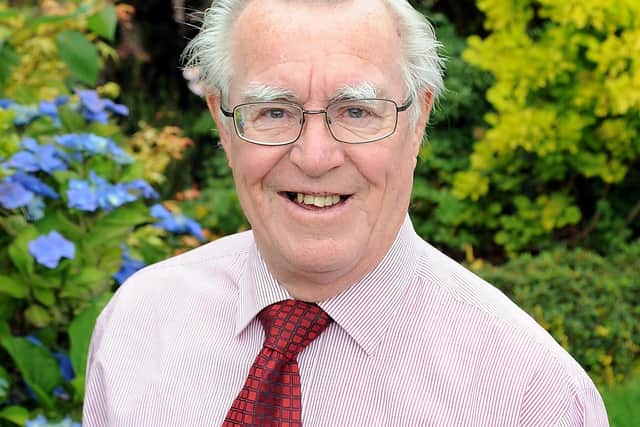Sandy's Garden ... That Burning Sensation
and live on Freeview channel 276
No, although I am a frequent and regular attendee at garden centres … and welcome back, all of you … my choice of summer bedding is very ordinary. Geraniums, begonias and busy lizzies will do me nicely, if that is the choice on offer. I’d happily add some variety to that limited range: but if that is what the supermarket has, then I’ll make do with that.
How pleased I was when the job was done, more than twenty largish planters all planted up to my complete satisfaction, not to mention a fair number of smaller pots; and how pleased I was to have used compost from my very own compost bin, fortified with a generous helping of bone meal from an overwintered tub. Alas, pride comes before a fall!
Advertisement
Hide AdAdvertisement
Hide AdI realised that my originally vigorous bedding plants were drooping, yellowing and looking decidedly unwell. And I think, gentle reader, that you may have guessed what I had done. Yes, you got that in one; I hadn’t tested my straight-out-of-the-bin compost.


A reminder of the principal nutrients which plants need to thrive in the confined … and usually overcrowded … space in a planter would not go amiss at this point. All plants need nitrogen, phosphorus and potassium – nitrogen for stems and healthy leaves, phosphorous for a strong, abundant underground support system and potassium for general health and wellbeing and to encourage flowers and fruits.
The chemical symbols for these essential elements are N for nitrogen, P for phosphorous and K for potassium; and if you look at any packs of garden fertiliser in a garden centre, you will see these three chemical symbols prominently displayed together with a string of three numbers; my shorthand way of remembering which element does what is to say nitrogen for shoots, phosphorous for roots and potassium for fruits; so N-P-K for shoots, roots and fruits.
The short string of numbers reveals the ratio in which these chemical elements are mixed in the fertiliser; so 15-10-5 has three times as much nitrogen and twice as much phosphorous as it has potassium; and they also tell you that this fertiliser contains 15% nitrogen, 10% phosphorous and 5% potassium, so it’s very good for shoots, good for roots and it includes some potassium to help fruits.
Advertisement
Hide AdAdvertisement
Hide AdIndustrially-produced growing composts and soils … as sold in garden centres and supermarkets … are fortified by the producers for their intended purpose – seed compost, bulb fibre, general purpose compost, compost for hanging baskets and so on.
Compost from my own compost bin almost certainly doesn’t include the best balance of essential elements for bedding plants. I should have tested it before I used it, adding only what was advisable.
Did I? No, I didn’t, carelessly adding a generous measure of bone meal, which is rich in phosphorous. In a culinary metaphor, I over-egged the pudding and my young plants paid the penalty.
Their young, tender roots were planted in excessively phosphorous-rich compost. Belatedly, I have confirmed via an internet advice column: ‘Excess phosphorus has several undesirable effects. It has been shown to interfere with a plant's absorption of iron, manganese and zinc, resulting in yellowing of the leaves and poor health of the plant So, before using bone meal or a high phosphorous fertiliser, do a soil test.’
Advertisement
Hide AdAdvertisement
Hide AdMy failure to perform a simple task … which I did know that I should … has led to my burning the plants; and now I share their burning sensation. Theirs is phosphorous-induced; mine is caused by shame at my own indolence. ‘Must do better,’ as a teacher might report!